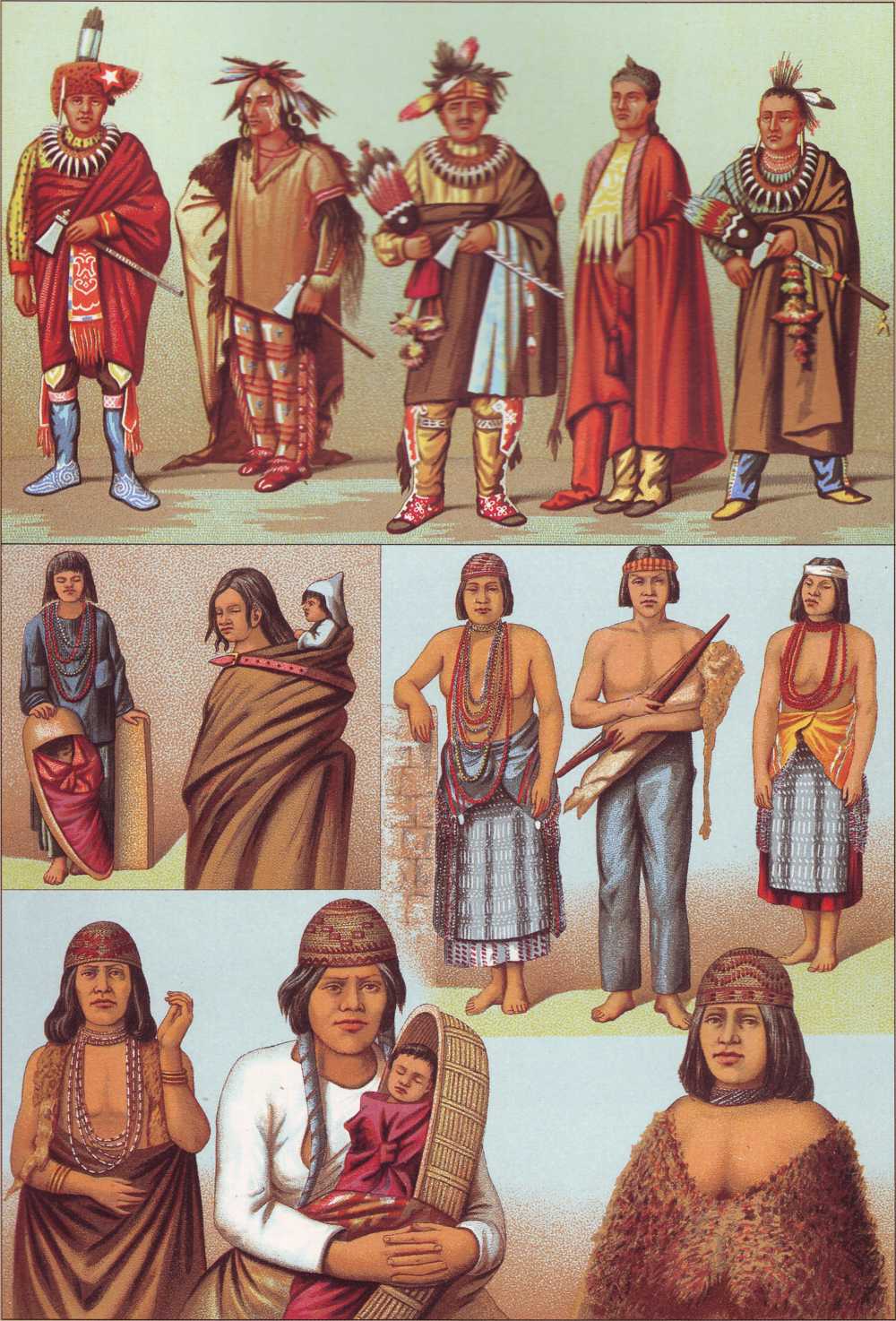
Create an Amazon Business Account
THE HISTORICAL ENCYCLOPEDIA OF COSTUME
ALBERT RACINET
THE CLASSIC WORK OF THE 19TH CENTURYp70-71

FOR MANY YEARS, THE EUROPEANS who colonized North America thought of the native Indians as one homogenous people. In fact there were made up of a large number of different tribes. Today, the Indians can be divided into two main groups: those that are still nomadic, such as the Sioux and the Yutes; and those - generally the weaker tribes such as the Californian Indians and the Cherokees - who live on reservations.
Costume changed with the changes in life-style. The tanned skin of a bison, still with its mane, was once used as a bed or a blanket. Now however, with the exception of their moccasins and gaiters, many Indians have stopped wearing skins and traded them for woollen clothes, finding these more practical and more becoming.
1.1 & 5 Indians from the Fox tribe in Kansas. The chief of the Foxes (1.1) is wearing a fur bonnet with a woollen star on it and a plume made of fur and cotton. His necklace is made from the skin and teeth of a bear. The Fox brave (1.5) is wearing a similar necklace and has a feather at the back of his head, probably from a wild cock or a pheasant.
1.2. An Indian from New Mexico, with red and white face-paint and a mirror hanging from his necklace. He wears a large woolen blanket as a cloak, and his trousers are fringed and decorated with red horizontal lines and blue crosses.
1.3. A chief from the Sacs tribe from Kansas, wearing a cotton turban topped with a feather plume. The lining of his cloak is appliquéd, and his woollen trousers are gathered in just below the knees with garters.
1.4. A chief of the Kaw tribe from Kansas, with a huge scarlet cloak and a piece of yellow woollen cloth decorated with white patterns on his chest.
The Indians in Oregon and Northern California are mainly of the Killimous tribe. They are known for their hunting skills and their dexterity with horses. The braves would prefer to wear skins, as their chiefs do, but normally have to be content with a black loincloth.
2.1. A North Californian Indian woman, with a tunic of cotton and a skirt of wool; the crib is made of wood.
2.2. Again from North California, this woman wears a woollen cloak and her child is dressed in cotton.
2.3. An Indian from the same region, wearing a wicker-work headdress, a large necklace made from coloured glass and stones, a cotton skirt fringed with shell and an apron which is also decorated with glass and stone beads.
2.4 & 5. Oregon Indians. The man's headband and trousers are made of cotton, and he carries a quiver made from skin. The woman is also wearing a cotton headband and has a necklace of red beads. Her apron is of the same style as that in 2.3.

3.1 An Oregon Indian, with a wicker-work headdress and a necklace carved from shells.
3.2. An Oregon Indian. Her long hair is tied with cotton ribbons while her clothes are made of wool. She has the characteristic wicker-work headdress and carries a crib.
3.3. A winter costume, made from different types of animal skin.